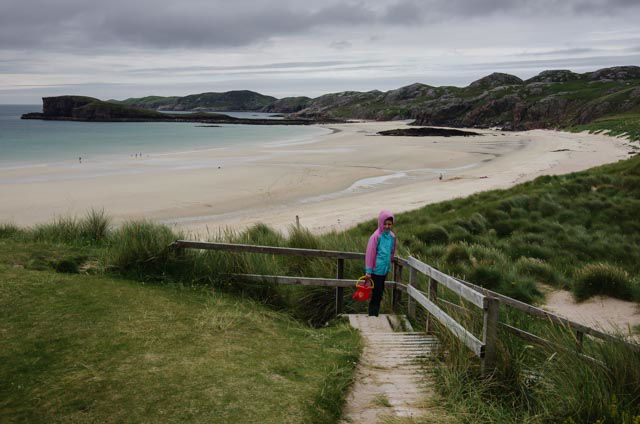
Looking at a map, and having ticked off the likes of John O'Groats, it is very tempting to want to visit Cape Wrath and the most north-westerly point on mainland Britain. However, it is not at all easy to get to, having no roads leading to it.
If you wish to make the trip and have three and half hours available for it, then head to Keoldale Pier where a ferryman will take you across the Kyle of Durness for a small fee, taking about 10 minutes. On the other side, a mini bus can take you the 11 miles to Cape Wrath, again for another fee. The road is narrow and bumpy and the bus does not go over 15 miles per hour so it takes about an hour, although there is an informative commentary along the way. You will now have 50 minutes to explore the cape, with its lighthouse and spectacular scenery, before the mini bus is ready for the return trip.
If you are happy to leave Cape Wrath to the hardiest of visitors but would like to continue heading west after Durness, then Oldshoremore is a possible destination. Continue on the A838 out of Durness and enjoy the views across the Kyle of Durness and to the mountains beyond.

After a while, you will reach Rhiconich and here there is a right turn onto the B801 towards Kinlochbervie and Oldshoremore.
Kinlochbervie is the most westerly port on the north coast of Scotland, and is a scattered hamlet around a harbour. Established historically as a fishing community, it now also relies on tourism. Fortunately, due to the importance of the fish handling depot here, the area has a surprisingly good road connection despite its remote location.
Continuing on beyond Kiblochbervie towards Oldshoremore, the roads return to the more expected single track roads. Continue along here and you will have the options to visit Oldshoremore Beach and Polin Beach. Both are beautiful sandy beaches with sand dunes behind, although the car park at Oldshoremore has the added bonus of public toilets.

This is, of course, on the west coast of Scotland but it looks similar to so many of the north coast beaches: a large expanse of pale sand, flanked by rocks at either end and dunes to the back. But a keen observer would notice that the rocks here are Lewisian gneisses and Torridonian conglomerate. Not that that matters if you just want a pleasant walk along the beach or have a bucket and spade and a mission to dig to Australia!
